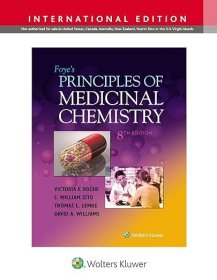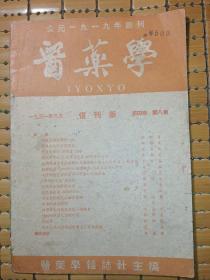
Foye医药学原理Foye's Principles of Medicinal Chemistry
现货正品,精装,内有笔记 有磨损
¥ 998 八五品
仅1件
江苏南京
认证卖家担保交易快速发货售后保障
作者David A Williams 著
出版社Oversea Publishing House
出版时间2002-02
版次1
装帧精装
货号88
上书时间2024-12-27
- 在售商品 暂无
- 平均发货时间 4小时
- 好评率 暂无
- 最新上架
商品详情
- 品相描述:八五品
图书标准信息
- 作者 David A Williams 著
- 出版社 Oversea Publishing House
- 出版时间 2002-02
- 版次 1
- ISBN 9780683307375
- 定价 916.00元
- 装帧 精装
- 开本 大16开
- 纸张 胶版纸
- 页数 1114页
- 【内容简介】
-
This comprehensive Fifth Edition has been fully revised and updated to meet the changing curricula of medicinal chemistry courses. The new emphasis is on pharmaceutical care that focuses on the patient, and on the pharmacist a therapeutic clinical consultant, rather than chemist. Approximately 45 contributors, respected in the field of pharmacy education, augment this exhaustive reference. New to this edition are chapters with standardized formats and features, such as Case Studies, Therapeutic Actions, Drug Interactions, and more. Over 700 illustrations supplement this must-have resource.
Massachusetts College of Pharmacy and Health Sciences, Boston. Textbook, for pharmacy students, now includes an overview of the drug development process from the perspective of an industrial research scientist. Also new to this edition: an overview of drug receptors, case studies, selected readings, and a companion web page. Previous edition: c1995. - 【目录】
-
Introduction Origins of Medicinal Chemistry
Part Ⅰ Principles of Drug Discovery
Overview Drug Design and Development: A Perspective
1. Natural Products
2. Drug Design and Relationship of Functional Groups to Pharmacologic Activity
3. Molecular Modeling and Drug Design
4. Receptors and Drug Action
5. Drug Design Through Enzyme Inhibition
6. Peptide and Protein Drugs
7. Physicochemical and Biopharmacemical Properties of Drug Substances and Pharmacokinetics
8. Drug Metabolism
9. U.S. Drug Regulation: An Overview
Part Ⅱ Pharmacodynamic Agents
Overview Drug Receptors: A Perspective
Section 1 Drugs Affecting Neurotransmission
10. Drugs Affecting Cholinergic Neurotransmission
11. Drugs Affecting Adrenergic Neurotransmission
12. Serotonin Receptors and Drugs Affecting Serotonergic Neurotransmission
13. Local Anesthetics
Section 2 Drugs Affecting Central Nervous System
14. Volatile Anesthetics
15. Hypnotics
16. Antiseizure Drugs
17. Psychotherapeutic Drugs: Antipsychotic and Anxiolytic Agents
18. Hallucinogens, Stimulants, and Related Drugs of Abuse
19. Opioid Analgesics
20. Drugs Used to Treat Neuromuscular Disorders: Antiparkinsonian and Spasmolytic Agents
Section 3 Drugs Affecting the Cardiovascular System
21. Cardiac Agents: Cardiac Glycosides, Antianginal, and Antiarrhythmic Drugs
22. Diuretics
23. Angiotensin Converting Enzyme Inhibitors, Antagonists and Calcium Blockers
24. Central and Peripheral Sympatholytics and Vasodilators
……
Part Ⅲ Recent Advances in Drug Discovery
Appendices pKa Values for Some Drugs and Miscellaneous Organic Acids and Bases pH Values for Tissue Fluids
点击展开
点击收起
相关推荐
— 没有更多了 —





























以下为对购买帮助不大的评价